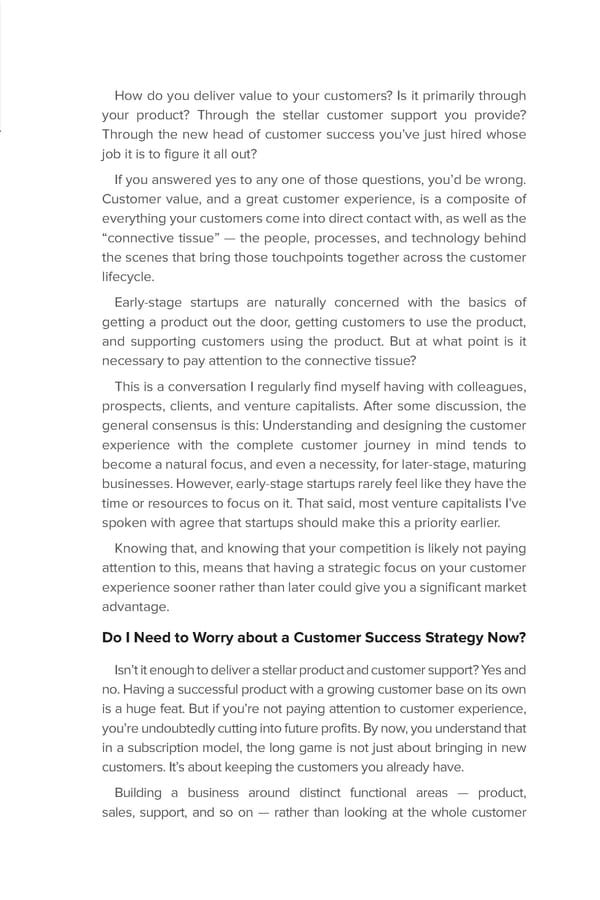How do you deliver value to your customers? Is it primarily through your product? Through the stellar customer support you provide? Through the new head of customer success you’ve just hired whose job it is to figure it all out? If you answered yes to any one of those questions, you’d be wrong. Customer value, and a great customer experience, is a composite of everything your customers come into direct contact with, as well as the “connective tissue” — the people, processes, and technology behind the scenes that bring those touchpoints together across the customer lifecycle. Early-stage startups are naturally concerned with the basics of getting a product out the door, getting customers to use the product, and supporting customers using the product. But at what point is it necessary to pay attention to the connective tissue? This is a conversation I regularly find myself having with colleagues, prospects, clients, and venture capitalists. After some discussion, the general consensus is this: Understanding and designing the customer experience with the complete customer journey in mind tends to become a natural focus, and even a necessity, for later-stage, maturing businesses. However, early-stage startups rarely feel like they have the time or resources to focus on it. That said, most venture capitalists I’ve spoken with agree that startups should make this a priority earlier. Knowing that, and knowing that your competition is likely not paying attention to this, means that having a strategic focus on your customer experience sooner rather than later could give you a significant market advantage. Do I Need to Worry about a Customer Success Strategy Now? Isn’t it enough to deliver a stellar product and customer support? Yes and no. Having a successful product with a growing customer base on its own is a huge feat. But if you’re not paying attention to customer experience, you’re undoubtedly cutting into future profits. By now, you understand that in a subscription model, the long game is not just about bringing in new customers. It’s about keeping the customers you already have. Building a business around distinct functional areas — product, sales, support, and so on — rather than looking at the whole customer
 Customer Experience and Success Page 2 Page 4
Customer Experience and Success Page 2 Page 4